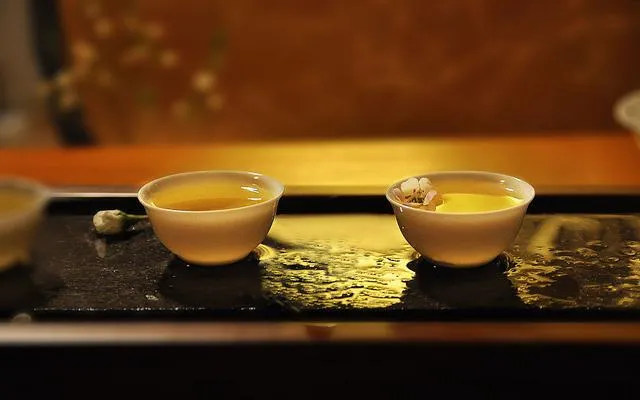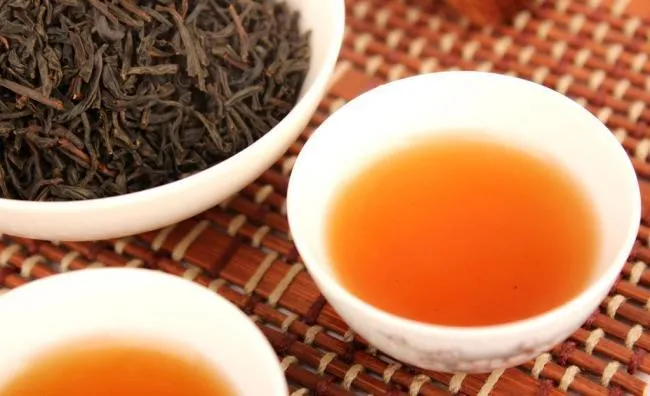Discovering the Global Journey of Chinese Tea: From Tradition to Modernity (Exploring the World with
How do Chinese teas go global
文 《雅安日报》高富华
“茶之为饮,发乎神农氏。”中国有着悠久的茶叶饮用史和茶文化史。茶作为贡品和祭品的记载可以推至周武王伐纣时期,而茶作为商品的记载,根据现有文献资料,到西汉才出现。
“Shennong (Divine Farmer) was the first one to use tea as a drink.” China has a long history of tea drinking and tea culture. According to literature available, tea, as a tribute or a sacrifice, dates from the time when King Wu of Zhou sent a punitive expedition against King Zhou of Shang, while it traces back to the Western Han Dynasty as a commodity.
从茶史研究的角度来看,茶叶能够成为商品买卖,说明在西汉时,饮茶已经相当盛行。那么,中国茶叶又是什么时候传到西方的呢?
From the perspective of tea history, the fact that tea became a commodity in the Western Han Dynasty indicates that tea drinking was quite popular back then. Well, when were Chinese teas spread to the West?
丝绸之路和茶马古道是我们现今发现的中国茶叶传入西方最早、最著名的两条国际通道。丝绸之路和茶马古道的雏形,大约也是在西汉时期形成。随着张骞出使西域,丝绸、茶就到了西方。但让人纳闷的是,在西方并没有关于中国茶的记载。The Silk Road and the Ancient Tea -Horse Road are the earliest and most famous international channels we have discovered so far for the introduction of Chinese teas into the West. The two ancient roads took shape almost in the Western Han Dynasty. Silk and tea were brought by Zhang Qian’s mission to the West. However, it is puzzling that there is no early record of Chinese teas in the West.欧洲最早出现茶是在1559年,威尼斯商人拉莫修在其出版的《航海记》中首次提到了茶叶,这与中国西汉王褒的《僮约》相差了1500多年。在这1500多年的时间里,在西方的文献中找不到一个茶字,更说不上茶叶的交易和消费了。更让人不解的是,在著名的《马可·波罗游记》中,我们也看不到他对茶叶只言片语的介绍。Tea appeared in Europe for the first time in 1559, as the Venice merchant Giovanni Battista Ramusio described in his publish book Navigationi et Viaggi (“Navigations and Travels”), which is more than 1,500 years later than Tong Yue by Wang Bao in Western Han Dynasty. In the more than 1,500 years, no word about tea can be found throughout Western literature, let alone tea trade and consumption. Even the famous book The Travels of Marco Polo does not contain a single word about tea, either.
晒茶制茶(图 东方IC)
直到1606年,荷兰人首次将中国的茶叶运往欧洲。但在此后的90多年间,茶叶并没有成为输送至欧洲的重要商品。1704年,英国商船“根特”号在广州购买470担茶叶,价值1.4万两白银,只占其船货价值的11%,而所载丝绸则价值8万两白银,是茶叶价值的好几倍。
In 1606, the Dutch first imported Chinese teas to Europe. In the next over 90 years, however, tea did not become a major commodity imported to Europe. In 1704, the British merchant ship “Ghent” purchased 470 piculs of tea in Guangzhou, valued at 14,000 taels of silver, accounting for only 11% of the value of the cargo on board. In contrast, the silk aboard was worth 80,000 taels of silver, several times the value of the tea.
1716年,茶叶开始成为中英贸易的重要商品,两艘英国商船从广州买走3000担茶叶,价值35085镑,占总货值的80%。18世纪20年代后,欧洲的茶叶消费迅速增长,茶叶贸易成为欧洲在东方的贸易公司最重要、最盈利的项目。
In 1716, tea became an important commodity in Sino-British trade. Two British merchant ships brought back 3,000 piculs of tea from Guangzhou, worth 35,085 pounds, accounting for 80% of the total cargo value. After the 1720s, tea consumption in Europe grew rapidly, and tea trade became the most important and most profitable business for oriental trading companies in Europe.
在品茗的历史中,沙皇俄国则要比欧洲其他国家幸运得多。1638年,一名叫斯特拉科夫的沙皇俄国使者受命前往蒙古拜见可汗,并带去珍贵的貂皮作为觐见礼。可汗收下礼物,并回赠了200包中国茶叶,使者将茶叶带回了圣彼得堡,沙皇命仆人沏茶请近臣们品尝,众人一致认为入口有奇香。从此,俄罗斯人开始了漫长的饮茶史。
In the history of tea drinking, Tsarist Russia was much luckier than the rest of Europe. In 1638, a Tsarist Russian envoy named Stratkov was sent to Mongol Empire to pay respects to Khan and bring precious marten as a tribute. Khan accepted the gift and repaid 200 bags of Chinese tea. The envoy brought the tea back to St. Petersburg. The Tsar ordered his servants to make tea and invited his courtiers to taste it. Everyone was amazed at it wonderful fragrance. From then on, Russians began a long history of tea drinking.
茶叶曾引起了西方人的极大好奇(网络图片)
事实上,从16世纪西方接触茶算起,在此后3个多世纪中,茶叶一直被西方人疑为“有毒之物”。1664年,东印度公司向英王进贡茶叶后,追求时髦的贵族妇女纷纷仿照王室试饮起来,可她们担心茶叶有毒,饮茶之后还要喝白兰地“排毒”。
In fact, tea was suspected as “toxic” by Westerners in the following more than three centuries from the 16th century when Westerners came into contact with tea. In 1664, after British East India Company paid tribute to the King of Britain with tea, fashionable aristocratic women flooded to drink tea as the royal family did. But they worried that tea was toxic, so they drank brandy for “detoxification” after they drank tea.
茶是怎么生产出来的?欧洲人一直不解,这种东方古国的神秘植物引起了西方人的极大好奇。直到1560年,葡萄牙耶稣会传教士克鲁兹乔装打扮混入一群商人队伍中,在4年多的时间里,他来往于中国贸易口岸和内地,才搞清了茶的来龙去脉。回国后,他把几年的见闻写入了《中国茶饮录》,这是欧洲第一本介绍中国茶的专著。
How was tea produced? Europeans were always puzzled by it. This mysterious plant from an ancient oriental state aroused great curiosity of Westerners. Into 1560, the Portuguese Jesuitic missionary Cruz dressed himself up and mingled with the men of a caravan. He traveled between China’s trade ports and mainland and found out the origin of tea in more than four years. After returning to his country, he described what he had seen and heard in his Book of Chinese Teas, the first European monograph on Chinese teas.

茶农采茶忙(网络图片)
1848年,苏格兰“植物猎人”福琼的到来,则真正解开了欧洲人对茶的误解。长期以来,西方人一直相信茶树有绿茶树和红茶树之分,而福琼却告诉他们,绿茶和红茶的区别,只在于制茶工艺的不同。他这一观点起初受到了公众和专家的质疑,他请制茶专家在英国公开进行手工制茶后才得到了认可。
In 1848, the Scottish “plant hunter” Robert Fortune arrived in China. He really unraveled the European misunderstanding of tea. Westerners had long believed that tea trees were divided into green tea trees and black tea trees. Fortune told them that the difference between green tea and black tea was only caused by the tea making process. His view was initially questioned by the public and experts, so he asked tea experts to make tea in front of the British public. Then, his statement was accepted.
1867年前后,一个叫唐古柏的英国人又来到中国,他计划的考察路线是成都—雅安—康定—巴塘—印度,实际上却只走到巴塘便原路返回。唐古柏所走的路线,正是古已有之的川藏茶叶大道(今称“川藏茶马古道”),来自雅安、邛崃等地的边茶,通过这条路源源不断地转运到西藏、青海等地。
Around 1867, an Englishman named Tang Cooper came to China. His planned route was Chengdu-Ya’an-Kangding-Batang-India. In fact, he only reached Batang and then returned along the route. Tang Cooper’s route was exactly the ancient Sichuan-Tibet Tea Road (now known as “Sichuan-Tibet Ancient Tea-Horse Road”). Biancha (a kind of tea in Sichuan) from Ya’an, Qionglai et al was transported through this road to Tibet, Qinghai and other places.
面对茶这片神奇的“绿色”黄金,英国商界迫切需要打开中国西南门户。在唐古柏之后,不断有人进入雅安一带,了解川茶种植和边茶贸易。
In face of the magical “green gold”, the British business community was desperate to open the door to southwest China. After Tang Cooper, Westerners came to Ya’an successively to understand Sichuan tea planting and biancha trade.
在史海中打捞碎片,还原中国茶走向世界的过往,为我们打开了一道“认识自己”的独特窗口,也让我们可以从历史中探寻以茶为元素的中国文化符号的意义。
By virtue of the fragments in history, we have narrowly restored the picture of Chinese teas going global, opening a unique window for us to “know ourselves”, and enabling us to explore the significance of tea-related Chinese cultural symbols from history.
主编:邓灼
欢迎订阅·诚邀合作
国内统一连续出版物号:CN 51-1788/F
国际标准连续出版物号:ISSN 2096-2886
邮发代号:62-625
联系电话:(028)86529118
新闻线索:(028)85471528
投稿邮箱:thebeltandroadrpt@163.com
联系人:肖露













用户评论
中国的乌龙茶口感独特,让人爱不释口,是走向世界的一大亮点。
有6位网友表示赞同!
通过全球茶叶博览会,中国红茶得到了更多国际朋友的喜爱和认可。
有14位网友表示赞同!
金骏眉是中国新茶中的明星产品,在国外也颇受欢迎,其独特的蜜香深受好评。
有7位网友表示赞同!
普洱茶在传统与现代的融合中不断革新,逐渐成为世界茶饮市场的一股强大力量。
有13位网友表示赞同!
中国的绿茶不仅保留了清香,还包含了丰富的健康元素,深受海外消费者青睐。
有13位网友表示赞同!
茉莉花茶在中国已有悠久历史,在走向全球的过程中更融入了不同文化的审美。
有8位网友表示赞同!
铁观音作为中国乌龙茶的代表之一,以其独特的烟熏味和高雅的香气在国际市场上占有一席之地。
有19位网友表示赞同!
中国的白毫银针以其精细的质量、独特的口感征服了不少国外茶客的心。
有13位网友表示赞同!
云南大叶种普洱受到越来越多的关注,其特殊发酵过程产生的独特风味备受海外爱好者的追捧。
有13位网友表示赞同!
随着全球对健康生活方式的追求增加,“茶叶养生”的概念使得中国茶文化更加普及。
有8位网友表示赞同!
通过与中国制茶大师的合作交流,日本、韩国等国家的茶艺师开始更多采用中国传统制茶技艺。
有5位网友表示赞同!
中国茶品在国际咖啡展中亮相后,引起了一场全球范围对传统饮品的新风潮。
有6位网友表示赞同!
随着中国文化走向世界,越来越多外国人对中国茶的历史和文化背景产生了浓厚兴趣。
有8位网友表示赞同!
茶叶文化成为了连接不同国家、地区的人们的一个重要纽带,传递着中国的热情与友好。
有18位网友表示赞同!
通过电商平台,中国小众茶叶品牌逐渐打开了国际市场,其独特的风味得到了全球消费者的喜爱。
有10位网友表示赞同!
海外留学生对于中国传统茶文化的热情,为中国的茶叶产业带来了新的机遇和市场。
有16位网友表示赞同!
茶叶不仅是饮品,更是一种艺术。在国际展览中展示的传统泡茶技艺,吸引了众多外国朋友的目光。
有12位网友表示赞同!
中国茶的种植与加工技术已得到全球范围内的肯定,在国际农业交流大会上分享了经验和成果。
有11位网友表示赞同!
随着健康生活的趋势在全球范围内兴起,中国的有机茶也逐渐成为高端消费市场的热门选择。
有14位网友表示赞同!
通过与其他茶文化的融合与创新,中国传统茶在世界舞台上呈现出更多元化的面貌和可能性。
有15位网友表示赞同!